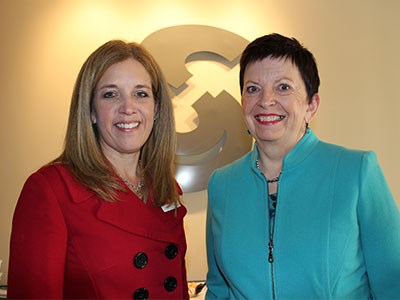When 10 per cent of your capital expenditure goes towards the hydro bill, and you consume one per cent of the province’s hydro alone, power is more than just an inconvenient monthly bill.
This is the case for Vale’s Ontario operations, and the cost of hydro is becoming increasingly vexing. But they are taking advantage of energy savings programs, and hope to see other businesses do the same.
“When we do our budget planning, the price of energy is the second highest operating cost,” said Jody Kuzenko, Vale’s director of refining in Sudbury. “You can see that energy pricing is a key variable that matters to us.”
Vale joined other Sudbury businesses, the Greater Sudbury and Ontario Chambers of Commerce, and the Independent Energy System Operator (IESO), at a roundtable Jan. 29 to discuss hydro prices, cost savings programs and provincial policies.
Kuzenko said that Ontario’s prices are higher than those in bordering provinces, and Vale’s operations in Manitoba are significantly less burdened by hydro. Sudbury chamber board chair Karen Hourtovenko thinks Northern Ontario companies are even further impacted.
“It’s not just a Sudbury issue,
it’s an Ontario issue,” said Hourtovenko. “We do have
differences, though, because of the industry that primarily drives
Northern Ontario. Although it is a burden absolutely for smaller
businesses, at an energy-driven company [like Vale] you can’t just
turn the lights down and work with candles.”
However, programs
run through the IESO can help cushion high costs. For example,
Kuzenko said Laurentian University representatives described an
Energy Manager Initiative she hadn’t heard of in which a facility
receives an initial payment of $50,000 if they hire an energy
manager, someone qualified to develop and implement energy strategies
and improve efficiency.
The range of programs also include assistance for retrofitting with improved equipment and systems, funding for energy audits, and support for new construction projects that incorporate energy efficient components. Most of the programs rely on companies fulfilling conditions prior to qualification, though, and Kuzenko would like to see more outcomes-based funding that rewards businesses for energy-efficient behaviours and projects. She is optimistic ISEO’s presence at the roundtable will facilitate this shift.
“Around the table we heard that a lot of people are using these programs,” said Sudbury chamber public relations manager Joyce Mankarios. “We need to make sure that all businesses know these incentives are available to them. It’s good to see the willingness of IESO to discuss ways to make their programs more responsive to employers in all regions of the province.”
“Our job at the chamber is to work hand in hand with the Ontario chamber to push policy through to the government to help our members in the long run,” said Hourtovenko. Specific policy suggestions brought forward at the roundtable included the need for flexibility in IESO’s “save on” programs to include outcomes-based programs rather than a criteria-based systems so that businesses can meet the intent of the program rather than fulfill initial and prohibitive criteria, and greater transparency to end users to clarify what cost drivers are.
“We know from the long-term energy plan that electricity costs will be going up, so we as a chamber need to be mindful of this and we need to look at ways we can bend the electricity curve,” said Mankarios. “We need to ensure Northern Ontario is a competitive jurisdiction for our businesses to be able to thrive and discussing how we can constrain electricity costs is an important piece of the puzzle.”




